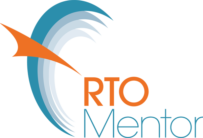Advances in technology are providing RTOs with ever-expanding options for technology-mediated teaching & learning.
Whilst managing training organisations I was very keen to use the latest in technology to assist in the learning process. The organisational demands of industry and shift workers also put pressure on training timeframes for the learning. E-learning started to play a key role as opposed to traditional ‘classroom’ methods. This didn’t mean everything was done via electronic means, it just meant there was a blend of different ways to get the point across to be ‘smarter’ and more ‘efficient’. This is not isolated just to Australia.
A couple of months ago I read an interesting article about the United Kingdom market where David Willetts, minister of universities and science, urged universities to invest in putting courses online. This was not just a call to action, but also an indication that the e-learning revolution has now reached the top of the UK government’s priority list. Due to all the recent changes in the British market, e-learning is certainly something that all higher education leaders should be considering as an alternative tool for expanding global reach, improving access and, of course, increasing revenue.
Sometimes it can be really difficult to provide training for staff during normal working hours, so coming up with a solution that suited the shifts and urgent needs of industry are key. I still believe that blended learning is key and to have maximum impact in your training you still need to incorporate the face to face group work in a classroom setting, as well as including IT tools such as e-learning, videos, blogs or forums. Employees use the concepts they have learned, apply the theory into real world situations, and use the online tools to discuss with others the outcomes.
Meeting the training package requirements MUST be considered, as certain practical tasks may still need to be taught and assessed ‘on-the-job’.
A keen favourite of mine is to use Computer Generated Imaging or video imaging as simulated training which enables up-skilling of staff in areas that could be high risk; taking away some of the risk of practising in the “real world”.
When developing an e-learning strategy remember to consider your target market. A good example; Indigenous students like to use games or to see pictures. In order to introduce a new technology it is a good idea to use games so that the students can learn the new technology in a nonthreatening way. It is also likely that the students will have a diverse range of skill levels, so the resource should be developed to allow success with a range of skill levels.
Simulation and e-learning is beneficial and allows learners to be autonomous, assisting industry, and also provides learning’s in literacy and numeracy . E-learning and simulation can be a very effective way to gain recognition of prior learning (RPL) for qualifications.

